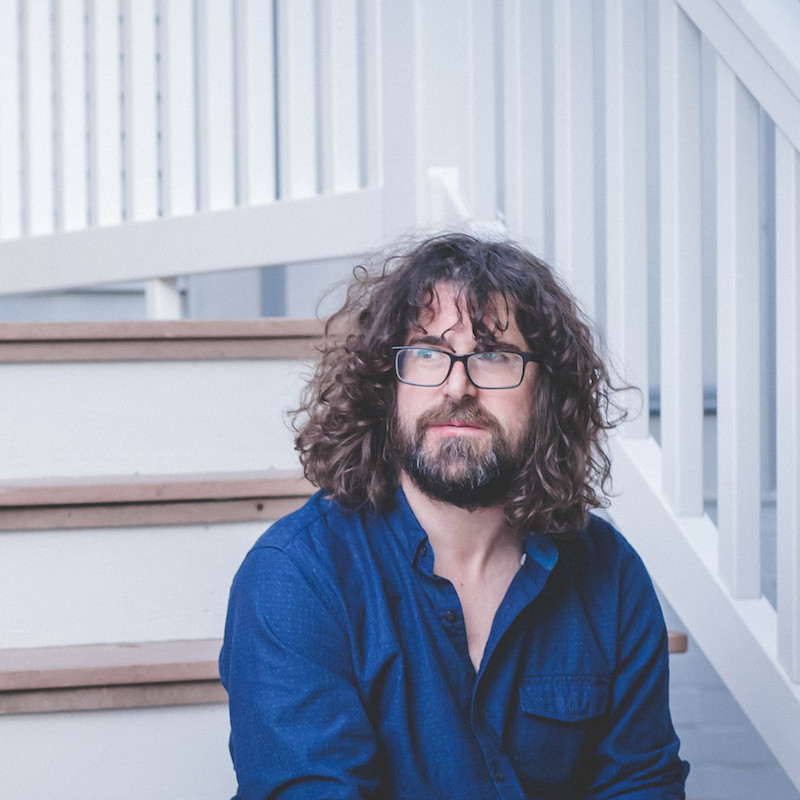
by Jo Higgs
Spatial limitations and temporal exploration: Lou Barlow once again flourishes on his latest solo record, Reason To Live.
Musicians as prolific as Lou Barlow often find themselves hectically spread between projects. Involvement with Dinosaur Jr., Sebadoh, The Folk Implosion and his own solo work – be it touring or recording – means that extended periods of time at home are scarce, therefore, making these moments all the more precious.
The events of the last year or so have unexpectedly rewritten the script – meaning that these precious moments of serene domesticity become the norm – further posing a new challenge for Barlow and co. No longer is finding the capacity to operate as a present family member in the midst of crazy musicianship the task, but, instead, to sneak brief moments of musical fruition into the wonderful entanglement of familial relations.
The creative result of Barlow holing up in his home in Massachusetts presents itself in the lovingly gritty Reason to Live. Family and music, or, more specifically, a unique collision of these two often separated spheres are the titular reasons to live. ‘I had to learn to be able to go into my room and record things and become immersed, but also be able to come out at a moment’s notice and interact with the kids,’ Barlow says. ‘It’s a really unique challenge. I guess I feel like my role of father and partner is rooted in that I like to be available.’
Reason to Live isn’t just a project borne out of a previously unparalleled stretch of child-caring, but it also acts as a collaboration with Barlow’s own childhood, or certainly his formative years. The opening moments of the album are archived from old four-track recordings made back in 1982 in a way that quite literally allows a temporal suturing of what Barlow describes as a ‘very clean, much fresher and undamaged self,’ and his current bearded, wiser and perhaps less pristine self. In My Arms is a tactfully truthful and representative welcome to the project: it charts Barlow’s musical history, as does the whole album. He comments that on ‘this record, I made a really conscious effort to bring together all the parts that I think set me apart. Just wrap it up and give it just like “here it is.” I’d love to do something with even more breadth to it someday.’ Further, he ponders upon what the most integral element of his work is: ‘I’ve sometimes had these moments where I’m like “is there room in the world for me? What is my thing? What can I do exactly? What’s holding me in this spot?” Recently, I think it’s just that I can really hear melodies; that’s maybe my strength.’

At this point in his career, it seems categorically evident that there is room in this world for Lou Barlow. Furthermore, while his melodies are undeniably laced with beauty and an impressively discrete ear-worming quality, it would be a great disservice to his work to allow any laurels to be rested solely on the strength of this. Boiling down the qualities of a single project of Barlow’s into a supposed essence would be a feckless task, and while this quality of melody might have grounds to claim this importance, the warmth and false simplicity of his production occurs as another strong candidate.
The outstanding production across the album is understated. There’s no complex layering of strangely manipulated synths or swells of lush string sections – it’s comparatively bare, naked, honest. Barlow notes that for him, ‘limitations are a big theme. Even the way I recorded the record. I have a maddeningly simple recording setup. I have almost no gear.’ The recording software he uses only allows him 16 tracks, but his hatred of ‘the way these companies sell this stuff and [his reluctance] to learn a new digital audio language,’ prevents him from accessing anything more advanced. Ultimately, this informed the new record as it had him thinking ‘I’m not gonna sit and complain about what I’ve not got anymore; I’m just gonna use it and do the best I can. It’s what I used to do. In the end, the limitations drove the spirit of the record and probably made it better.’
Barlow’s recording gear might be minimal, but his tools for composition are comparatively even more so. In reaching back into the genesis of his love of music, he reminisces that ‘I started writing songs when I was very young. I was just picking up the family guitar, or the one I was given, but by the time I was 12 or 13, there were only a few strings left on them.’ He continues expressing that ‘buying the strings and re-stringing wasn’t a process I wanted to go through when I was picking up a guitar – I just wanted to play it. I’d pick it up in whatever state it was in, tune it to something that sounded good and begin writing my songs.’
It takes no guitar nerd or prodigious luthier to know that western guitars are pretty universally accepted to be at optimum performance with six strings. ‘Six strings is just too fucking much!’ he laughs, ‘there’s almost no folk instrument with six strings.’ In consciously returning to his own roots in music, he has perhaps inadvertently returned to the roots of music as a whole – stripping it down to its most powerful simplicities and allowing his own voice and story to bring out the brightest colours.
In thinking about and laughing over his love of guitars insufficiently strung by common standards, he recalls an anecdote that appears to predestine his career of music: ‘I listened to a lot of college radio, which back at this time was very adventurous, and I had a lot of it at my fingertips. I heard a lot of really DIY underground music on this, and there was one show on at midnight on Sundays where they played a Top Ten called DAW Division. Basically, it was just their own home recordings – like joke songs – and I was just like, “I’ve got to get onto DAW Division,” so I recorded a lot of very short songs cos I was very into hardcore punk rock at the time, and any self-respecting hardcore song is about a minute long: NO LONGER! Very concise, rudimentary, fast. So I did acoustic recordings and in my own way imitated it. Thirsty [off of Reason] is a good example of that – it really harkens back to what I was doing back then. I got on the show, I made it number three one week.’ He continues, ‘I had this song called I Love Me, which was just ‘I love me-ee, I love me-ee’ hahaha! That was my first brush with greatness, I guess, and adoration from at least the two DJs. Shortly after that, I actually got my own band together, I met J. Mascis and we had a hardcore band called Deep Wound. That was late ‘82 maybe? I’m not sure. Probably ‘83. From this home recorded stuff to playing guitar in a hardcore band.’
In many ways, the notion of limitations allowing work to flourish is the basis of this project. It was limited by the spatial aspect of being unable to work outside the family home, and to flourish in its themes of connectivity. It was limited by the barebones recording gear it was tracked to – to flourish in its lo-fi sound – and how, as Barlow says, he had ‘to really devise exactly how to get what I want in a song.’ And it was limited in the usage (not exclusively) of guitars with only four strings to flourish as a uniquely Barlow-esque sound that is loosely connected, though rather distinct, from his works in other projects.
Filled with gorgeous melodies and touching sentiments, Reason to Live is the sort of record that may not further elevate Barlow’s standing in the mainstream musical world, but will further solidify it for those that truly care.
If you’d like to support us by subscribing to our zine, click here – it’s just £6 a year for four copies (inc p&p).





